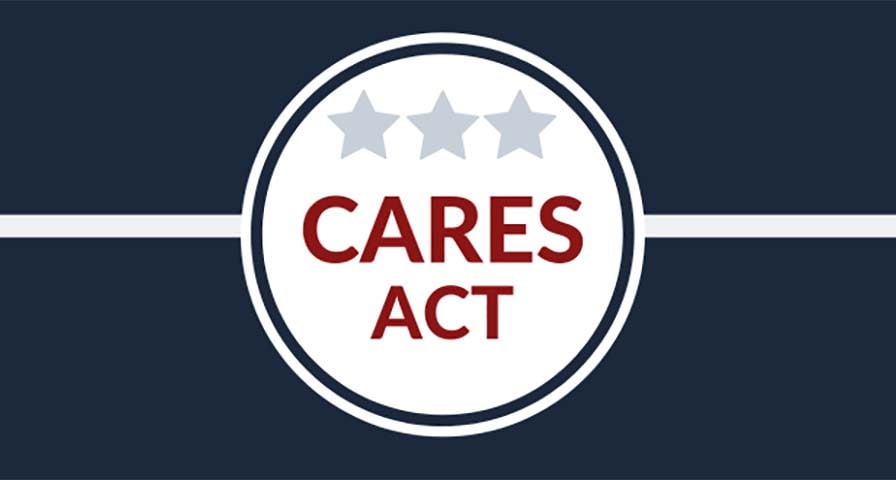IHT ZONE Purchases Eligible For New Round Of Federal CARES Funding
In December 2020, the federal government approved $54 billion in new funding for schools through the Coronavirus Aid, Relief, and Economic Security (CARES) Act. The IHT ZONE wrist heart rate monitor qualifies for this federal funding as technology which supports student physical and emotional health.
Schools can use federal CARES funding incorporating the IHT ZONE in projects that meet any of the following criteria:
- Addressing learning loss;
- Purchasing educational technology — “including hardware, software, and connectivity” — for students, including assistive or adaptive devices and equipment.
- Providing mental health services and support; and
- Improving school facilities to reduce the risk of coronavirus transmission.
- provide safe and healthy schools,
- give students a well-rounded education, and
- support the effective use of technology.
The latest round of CARES Act funding follows a $13 billion allocation from April 2020 that made funding available to public schools and private schools that function as school districts for programs that focus on technology and student wellness. Including the $1.2 billion allocation to schools through ESSA, the federal government has sent $70 billion to local schools during the 2020-21 academic year.
Using CARES Funding for Programs Including the IHT ZONE
Local school districts must use the funds as “emergency relief funds to address the impact that COVID-19 continues to have on elementary and secondary schools across the Nation,” according to the Office of Elementary and Secondary Education website.
School districts must utilize the latest round of funding by Sept. 30, 2022. More CARES Act funding for schools could be made available in the coming months as the new administration sets its priorities.
Many schools have used ESSA and the first round of CARES funding to purchase IHT’s heart rate solutions. Schools use the IHT ZONE wrist heart rate monitor and IHT Spirit System software to teach students to self-manage both their physical fitness and emotional wellness.
In December, the East Union High School District in San Jose, Calif., used CARES Act funding to purchase 560 heart rate monitors for 10 high schools.
“Our assistant superintendent approached me and asked if PE had any big wants,” Lisa Baker, a veteran PE teacher who now works in a liaison role between the PE department and administration, said. “Yes, I wanted to add sets of [IHT] heart rate monitors for each of our schools. I simply made the request and it was granted.”
Impressed with the IHT ZONE’s ability to objectively assess student performance and effort, Baker first introduced the heart rate monitors to her school district in 2017. Since then, she’s worked to add more monitors at each campus. When her administration approached with the opportunity for funding, she leaped.
“Physical education needs to be assessed objectively and that’s what these monitors do,” Baker said. “As a teacher, you can tell who is working hard. For students, we are teaching them what their heart is doing when they are moving. It is a much more objective grading tool [for PE], which is where we hope to go.”
Another California school accessed CARES funding to purchase 465 IHT ZONE monitors for each ninth and tenth-grade student to use in an online PE program. School officials learned of the governor’s Learning Loss Mitigation Fund (LLMF) and felt the heart rate monitors qualified as part of an overall school nutrition program, criteria spelled out in California’s LLMF funding guidelines. The school’s PE leader submitted a proposal before the July 15 deadline and received approval, and the funding, in August.
“That was it,” the teacher said. “They had funding that needed to be used by Dec. 31. Bada-bing, bada-boom.”
The heart rate monitors give the teachers a way to be certain students are getting much-needed physical activity as they work away from school.
“There is no way to measure a child’s effort,” the teacher said. “That’s subjective – are they working hard or not, how can you really tell? But with this, we know they are working toward their best heart rate.”
Schools Find Success Securing ESSA Funding
 The McAllen (Texas) Independent School District used a portion of its ESSA Title IV, Part A funding to purchase IHT ZONE heart rate monitors for each of the district’s middle schools. Coordinator for Health and Physical Education Mario Reyna identified a fitness gap among the district’s middle school students, did his research, and developed a proposal to add IHT to his curriculum.
The McAllen (Texas) Independent School District used a portion of its ESSA Title IV, Part A funding to purchase IHT ZONE heart rate monitors for each of the district’s middle schools. Coordinator for Health and Physical Education Mario Reyna identified a fitness gap among the district’s middle school students, did his research, and developed a proposal to add IHT to his curriculum.
He worked with his district’s funding department and did his research on ESSA’s requirements before submitting his application.
“It’s not as tedious as writing other grants that take longer and may not be as much money,” he said. “It is time-consuming, but it’s worth it because once the funding is there and you get the system you need, hopefully, you use it for a couple of years, so it was worth the wait and the patience.”
Humble (Texas) ISD Coordinator of PE and Wellness Helen Wagner worked with her district’s director of state and federal funding to secure ESSA funding to add IHT’s heart rate solution to her curriculum. She found that the technology aligned with the district’s overall goals of empowering students to take a leading role in their education.
“It must be student-centered and student-driven,” Wagner said. “Those are the keys to everything. The more kids you can show that you’re going to affect, the greater the return on what the district can get for you.”
Once she showed how the technology would support student development, she kept the funding director – Dr. Jamie Bryson – updated with student progress.
 “I invited Dr. Bryson to see the new product and she was delighted to get that chance,” Wagner said. “She loved that.”
“I invited Dr. Bryson to see the new product and she was delighted to get that chance,” Wagner said. “She loved that.”
Solidifying the buy-in from those who manage the funds can lead to future proposals also receiving funding.
“I’m blessed because my district truly believes in student wellness,” she said. “Make sure they see it all, the difference that what you’ve purchased makes for your students and your program.”
IHT maintains a library of resources and templates to help teachers apply for funding. Please contact an IHT representative to learn more about those resources.


